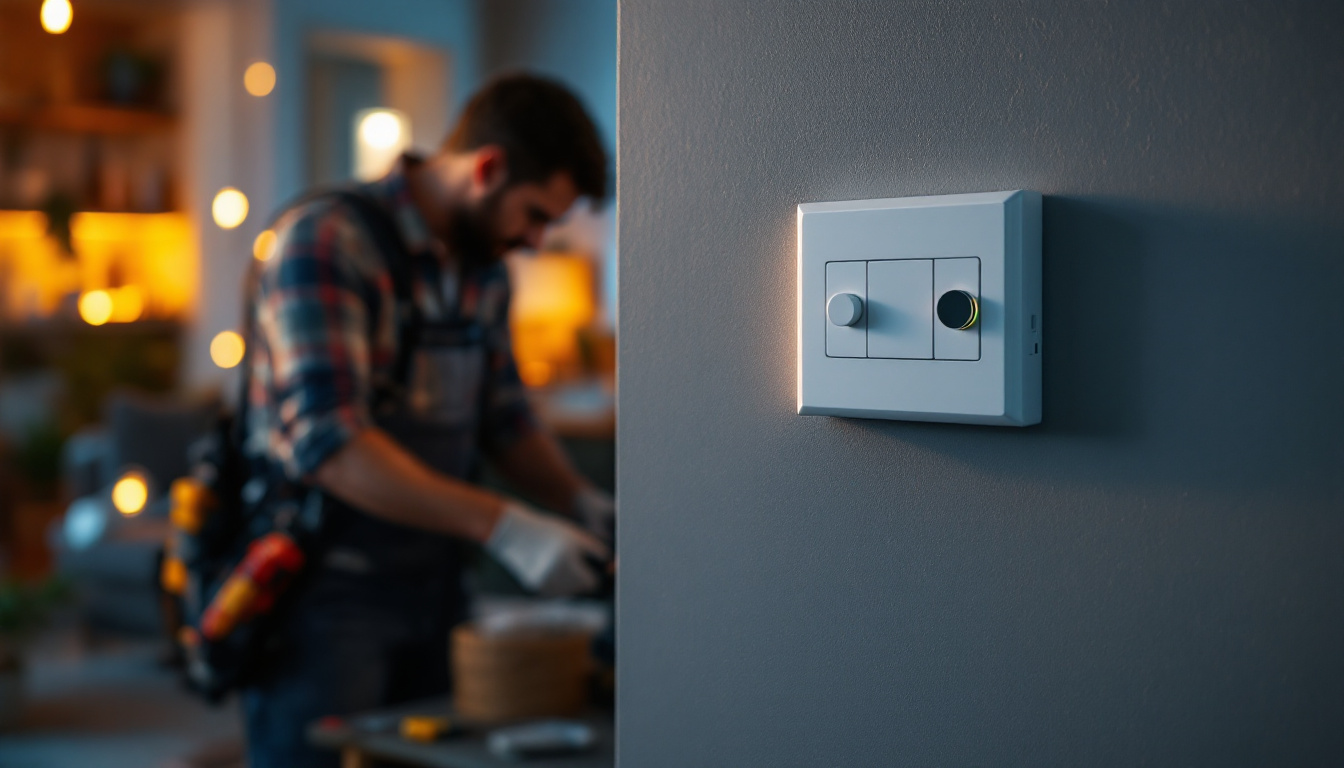
In the ever-evolving world of lighting solutions, timed light switches have emerged as a practical and energy-efficient option for both residential and commercial applications. For lighting contractors, understanding the functionality, benefits, and installation processes of timed light switches is essential for providing clients with optimal solutions. This article delves into everything a lighting contractor should know about timed light switches, from their types and advantages to installation tips and troubleshooting advice.
Timed light switches, often referred to as timer switches, are devices that automatically turn lights on or off after a predetermined period. They are designed to enhance convenience, security, and energy efficiency. By integrating these switches into lighting systems, contractors can offer clients a modern solution that meets their needs while promoting sustainability. In addition to their practical benefits, timed light switches can also contribute to a more organized and comfortable living environment, allowing homeowners to enjoy well-lit spaces without the hassle of manual operation.
There are several types of timed light switches available on the market, each catering to different needs and preferences. Understanding these types is crucial for lighting contractors to recommend the best option for their clients. Each type comes with its own set of advantages, making it important to assess the specific requirements of a space before making a selection. For instance, a busy family might benefit from a digital timer that can accommodate a variety of schedules, while a more straightforward installation might suit a single homeowner.
When selecting a timed light switch, several key features should be taken into account. These features can significantly impact the functionality and user experience. A well-chosen timer can streamline daily routines and enhance the overall ambiance of a space, making it essential for contractors to understand the specific needs of their clients.
Timed light switches offer numerous benefits that can enhance the value of lighting installations. Understanding these advantages can help contractors communicate effectively with clients about the benefits of incorporating these devices into their lighting systems.
One of the most significant advantages of timed light switches is their contribution to energy efficiency. By automatically turning off lights after a set period, these switches help reduce unnecessary energy consumption. This not only lowers electricity bills but also contributes to a more sustainable environment. Moreover, the integration of timed switches can lead to a decreased carbon footprint, as less energy consumption directly correlates with reduced greenhouse gas emissions. As more individuals and businesses strive to adopt eco-friendly practices, the implementation of timed light switches becomes a practical step towards achieving energy conservation goals.
Timed light switches can significantly enhance security for homes and businesses. By programming lights to turn on and off at specific times, property owners can create the illusion of occupancy, deterring potential intruders. This feature is particularly beneficial for clients who travel frequently or have second homes. Additionally, these switches can be integrated with smart home systems, allowing users to control their lighting remotely via smartphone applications. This capability not only adds an extra layer of security but also provides peace of mind, as users can adjust their lighting schedules in real-time, even when they are away from their properties.
For many users, the convenience of not having to manually control lights is a significant selling point. Timed switches can be programmed to align with daily routines, ensuring that lights are on when needed and off when not. This level of automation adds comfort to daily living and can be particularly appealing to elderly clients or those with mobility issues. Furthermore, timed light switches can be customized to accommodate different lifestyle needs, such as having outdoor lights turn on at dusk or setting indoor lights to gradually brighten in the morning, mimicking a natural sunrise. This feature not only enhances the user experience but also promotes healthier sleep patterns by regulating light exposure at critical times throughout the day.
Installing timed light switches can vary based on the type of switch and the existing electrical setup. However, certain general steps can guide lighting contractors through the installation process.
Before beginning any installation, safety should be the top priority. Ensure that the power is turned off at the circuit breaker to prevent electrical shock. Gather all necessary tools, including screwdrivers, wire strippers, and a voltage tester, to facilitate a smooth installation process.
The wiring process will depend on whether the switch is mechanical, digital, or smart. Generally, the following steps should be followed:
Once installed, programming the timed light switch is the next crucial step. The programming process can vary based on the switch type, but here are some general guidelines.
For mechanical timers, programming typically involves rotating a dial to set the desired on and off times. Users should refer to the specific instructions provided with the timer for detailed programming steps.
Digital and smart timers often come with more complex programming options. Users may need to navigate through a menu system to set specific days and times. For smart timers, downloading a companion app may be necessary to enable remote control and advanced features.
Like any electrical device, timed light switches can encounter issues. Being able to troubleshoot common problems is essential for lighting contractors to provide effective support to clients.
If lights fail to turn on or off as programmed, several factors could be at play. First, ensure that the timer is properly wired and that the power supply is functioning. If the wiring is correct, check the programming settings to confirm that the desired times are set correctly.
Should the timer reset unexpectedly, it may be due to a power surge or outage. Many digital and smart timers have a backup battery feature to retain settings during power interruptions. If this issue persists, it may be necessary to check for faulty wiring or consider replacing the timer.
Some timers may not be compatible with specific types of light fixtures, particularly LED lights. If flickering occurs or the lights do not respond to the timer, it may be necessary to consult the manufacturer’s specifications or consider a different timer model that supports the lighting technology in use.
Timed light switches are a valuable addition to any lighting contractor’s toolkit. By understanding their types, benefits, installation processes, and troubleshooting techniques, contractors can provide clients with informed recommendations that enhance their lighting systems. As the demand for energy-efficient and automated solutions continues to grow, embracing timed light switches can position contractors as forward-thinking professionals in the industry.
Incorporating these devices not only improves the convenience and security of lighting systems but also contributes to a more sustainable future. As technology advances, staying informed about the latest developments in timed light switches will ensure that contractors remain competitive and capable of meeting diverse client needs.
Ready to upgrade your lighting systems with the efficiency and convenience of timed light switches? Look no further than LumenWholesale for the highest quality, spec-grade lighting products at unbeatable wholesale prices. Say goodbye to local distributor markups and hello to superior lighting solutions that meet the highest industry standards. With LumenWholesale, bulk buying is a breeze, thanks to free shipping and no hidden fees. Elevate your lighting projects with the perfect blend of quality, affordability, and convenience. Don’t miss out on the best value in wholesale lighting—visit LumenWholesale today and make the smart switch to better lighting.

Discover the essential resources lighting contractors rely on to master recessed lighting casing.

Discover how LED linear pendant lights boost lighting contractors’ profitability with energy savings, modern design, and faster installation.

Explore the key challenges lighting contractors face in the ever-evolving industry of pathway illumination.

Discover how automatic light switch timers are revolutionizing the work of lighting contractors by enhancing efficiency and energy savings.